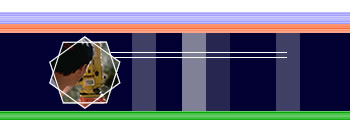The nonriparian broken boundary adjustment is based upon two basic
assumptions. First, that the errors in the surveying process are
accidental, and second, that the effects of errors in angular measurement
are equal to the effects of errors in chaining. Based upon the previous
two assumptions, the general rule for nonriparian broken boundary
adjustment is that the adjustment in latitude for each course is
to the resolved latitude of the closing error as the accumulated
length of that course, or courses is to the sum of all courses,
or L1 is to L, as C1 is to C, or L2 is to L, as C2 is to C in our
diagram. The same basic formula applies also to departure, so D1
is to D, as C1 is to C and so on. These rules for proportionate
resurvey would apply, for example, in the situation where the original
meanders were erroneous. The land between the erroneous meanders
and the actual water's edge is omitted land. In this situation the
erroneous meanders become a fixed boundary and the nonriparian broken
boundary adjustment is used to compute the position of that boundary
between meander corners.


